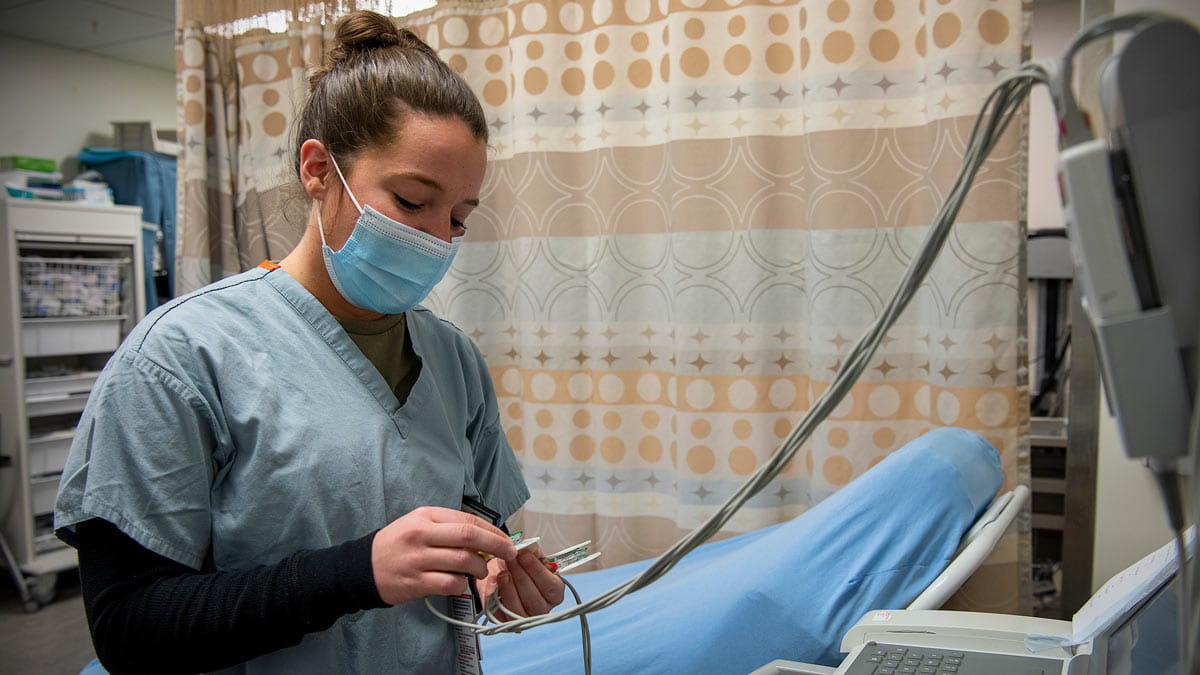When you think of sports injuries, infections may not be top of mind. Moderate exercise can even boost the immune system and lower the risk of infection.
Despite the health benefits of exercise, contracting certain infections can derail an athlete’s season and put the entire team’s health in jeopardy. That’s why it’s important to know the potential risks and how you can protect yourself from getting an infection.
Types of Infections
Athletes are susceptible to many infections, but the most common are respiratory, skin and viral infections.
“Athletes are like anybody else – they’re going to get the same types of infections as the general population,” says
Michael Jonesco, DO, an internal and sports medicine physician at Ohio State Wexner Medical Center. “Then there are certain sports, such as wrestling, that put you at an increased risk for skin infections. Those infections include fungal infections like ring worm of the skin and scalp, bacterial infections like impetigo, a crusting lesion commonly seen on the face and upper extremities, and viral infections such as herpes simplex."
Another well-known potential health issue in athletics is MRSA, a tough to treat bacteria that can live on the skin.
“Athletes can get small scrapes and injuries to their skin that allow the bacteria to enter,” says
Shandra Day, MD, an infectious disease physician at Ohio State’s Wexner Medical Center. “If someone has an open wound, it’s really important that they keep it covered during activity. Athletes with a MRSA infection may require clearance from a physician or trainer to participate in sports.”
If an athlete has mononucleosis, a virus that causes fatigue, sore throat, fever, swollen lymph nodes and headaches, sitting out can prevent a life-threatening complication.
“Mono can cause enlargement of the spleen and, if the patient’s participating in sports, especially contact sports, they could rupture the spleen, which is a life-threatening injury,” Day says. “The recommendation is to limit them from play – typically it’s about three weeks, sometimes longer – if they have a significantly enlarged spleen.”
Active bleeding will get an athlete pulled from play until the bleeding can be controlled and contained due to a slight risk of blood borne infections such as HIV, hepatitis B and hepatitis C.
“There could be a very small risk of transmission if you were exposed to the blood of someone who’s infected with one of these blood borne pathogens, if you have an open area in your skin or mucous membrane,” Day says. “When there is visible blood, the player is removed and they aren’t allowed to come back until they’re no longer bleeding.”
Prevention
Athletes can do a number of things to protect themselves from infections.
A healthy diet is a big part of it, Jonesco says.
“Make sure you’re giving your body the fuel it needs to rebuild its immune system after activity,” he says.
Personal equipment and facility cleanliness can reduce the spread of infection.
“Following any exercise, the biggest thing to do is to continue really good hand hygiene and self-hygiene,” Day says. “Shower immediately after exercise. If you’re using communal showers, don’t share bar soap and use a clean towel every time. After every practice or game, wash and completely dry your uniform.”
Coaches, team physicians and athletic trainers play an important role in keeping athletes healthy through participation policies and equipment maintenance.
“They have a huge responsibility in identifying these infections early, especially because athletes are in close quarters,” Jonesco says. “Whether it’s in gyms, team buses or staying in hotels, that’s how things can spread rapidly and can go from an isolated case to an epidemic quickly.
Day adds, “For team sports, it’s really important to make sure the equipment is appropriately cleaned and there is a regimented cleaning approach for shared equipment that follows appropriate disinfectant guidelines.”
Both doctors recommend keeping vaccinations current and avoiding other people who are sick.
“Practice self-observation – do your own mini skin check to check your body for lesions, redness, swelling or discomfort, and seek proper medical attention early before you spread it to others,” Jonesco says.
Is it OK to Play?
A “no pain, no gain” or “take one for the team” mentality may prompt a player to ignore infection symptoms.
Jonesco says the neck check can provide some guidance on whether you can exercise, practice or play when you’re sick.
“The general rule is anything above the neck is OK to push through and tough out, such as a common cold or an ear infection,” he says. “If you have other signs of systemic infection, such as a fever or flu-like symptoms that involve the entire body, or perhaps gastroenteritis, skin infections or anything respiratory like bronchitis or pneumonia – these are times when you need to let your body heal and recover before you return to activity.”





